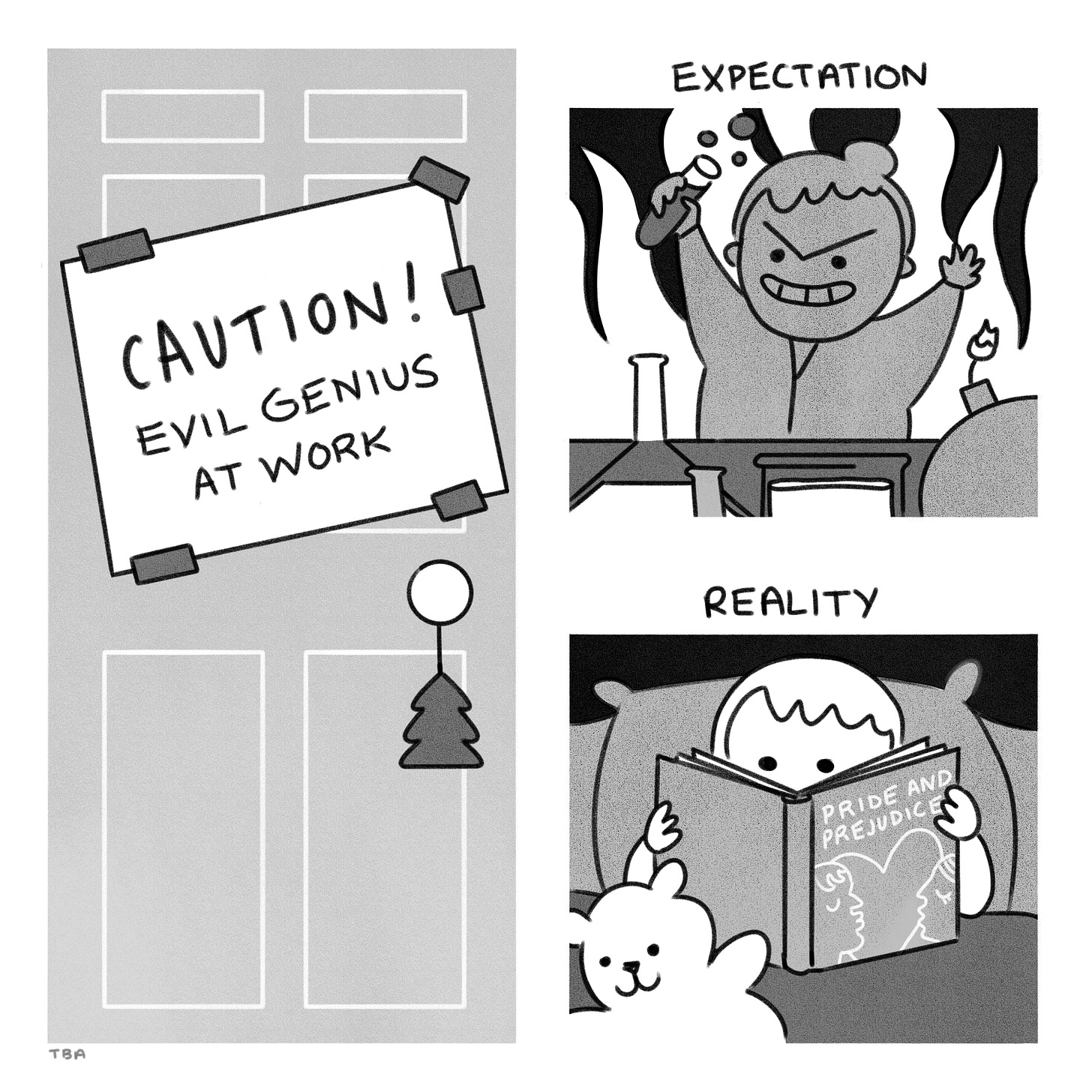‘Frankenstein’ and the perils of creative obsession
Becoming an egomaniacal recluse isn’t all it’s cracked up to be.
Welcome to Art Life Balance, a newsletter about art, life, and some other third thing. If you enjoy this newsletter and would like to others to find it, please ♥, share, or subscribe!
Many have written about the consequences of romanticizing creative obsession, but few have done so as devastatingly as Mary Shelley in her enduring novel, “Frankenstein,” whose titular character is so consumed by the creative process he accidentally creates a monster (oops!).
You know the story. Brilliant scientist devotes all his creative faculties to realizing an impossibly bold vision. Against all odds, he succeeds — but not in the way he expected. His creation may be constructed from human components, heck, it may even walk and talk and think like a human, but human (at least as Victor understands it) it is not. Unfortunately, it’s only in the moment of creative consummation, when the creature becomes animated by the spark of life and promptly peaces out, that this dreadful realization dawns on our protagonist.
So what went wrong?
Victor spends most of “Frankenstein” alternating between feeling sorry for himself and cursing his own creation (who, in fairness, does go on to murder everyone Victor knows and loves). However, in a rare moment of clarity, he laments the fact that he traded balance — what today we might call “wellness” — for single-minded focus when carrying out his dastardly deeds. He reflects on foregoing human interaction, neglecting his family and friends, sacrificing his health, and even cutting corners while constructing the creature itself.
His rumination culminates in this passage:
A human being in perfection ought always to preserve a calm and peaceful mind, and never to allow passion or a transitory desire to disturb his tranquillity. I do not think that the pursuit of knowledge is an exception to this rule. If the study to which you apply yourself has a tendency to weaken your affections, and to destroy your taste for those simple pleasures in which no alloy can possibly mix, then that study is certainly unlawful, that is to say, not befitting the human mind.
I posted this quote out of context on Notes and received a critical reply suggesting that under such rigid standards, no art would ever be created. And I have to admit, there’s a point there.
After all, the stereotype of the artist as an obsessive recluse persists for a reason. History provides no shortage of creators with antisocial habits and unconventional fixations who alienate themselves from others either intentionally or through their off-putting behaviors — and create something of enduring value. As a middle schooler, I clearly internalized the the obsessive creator archetype when in a moment of pure unadulterated cringe I appended a sign to my bedroom door reading, “Caution: Evil genius at work.”
This is a roundabout way of saying creativity and obsessive tendencies do sometimes come as a package deal, and maybe even to some extent augment each other, allowing the artist, the scientist, the visionary to do whatever it takes to make a breakthrough. But that doesn’t mean we should ignore Shelley’s warning.
First of all, the fact that imbalance and recklessness play a role in the lives of many significant creators is no reason to aim for these things as if they were virtues in themselves. Who’s to say how often these qualities are integral to what makes an artist great and how often they’re hinderances that prevent them from becoming even greater? Or how often both are true?
More importantly, as I realized upon putting my regrettable “evil genius” phase behind me, there’s more to life than being great.
Despite what certain mustache-twirling, beret wearing artistes might have you believe, living an emotionally balanced life is pretty fucking cool — for you, the people around you, and probably even the quality of your work. When we neglect our close relationships, mental and physical health, and domestic responsibilities, even for the sake of a creative calling, we can become, as Bilbo Baggins put it in “Lord of the Rings,” “thin, sort of stretched, like butter scraped over too much bread.” In this state, it’s difficult to write a coherent sentence, let alone produce a masterpiece. Worst of all, as Shelley so aptly illustrates in “Frankenstein,” we risk becoming disconnected from so much of what makes life inspiring in the first place.
The lesson here isn’t that we should never get lost in a creative task (it’s called flow, and I wrote a glowing article about it here), but that every now and then we can benefit from stepping back, like a painter observing a preliminary sketch from a different vantage point, to see more holistically what it is that we’re creating. And when we feel especially spread thin, we might step back even further: away from the canvas, out of the studio, and into other aspects of our lives.
Thank you for reading Art Life Balance.
If you liked this post, I’d love to know! Please ♥, share, or leave a comment.
Want to support this newsletter?
Consider becoming a paid subscriber. There are no fancy perks, but you will receive my sincere gratitude!







I've been prone over the years to go into creative consuming frenzies and some of them have yielded good things. But I have found they cloud my judgement. To some degree what I create in that state is rarely as much of a fait complete as I thought during said frenzy. And sometimes is complete garbage.
This is brilliant! Thank you for sharing.